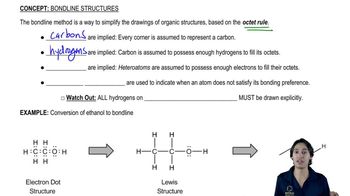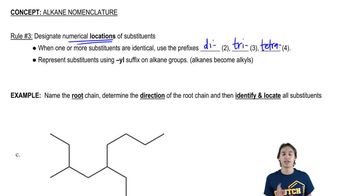Draw a condensed structure and a skeletal structure for each of the following:
l. 5-isopropyldecane
 Verified step by step guidance
Verified step by step guidance Verified video answer for a similar problem:
Verified video answer for a similar problem:



 3:43m
3:43mMaster The different parts of an IUPAC name with a bite sized video explanation from Johnny
Start learning